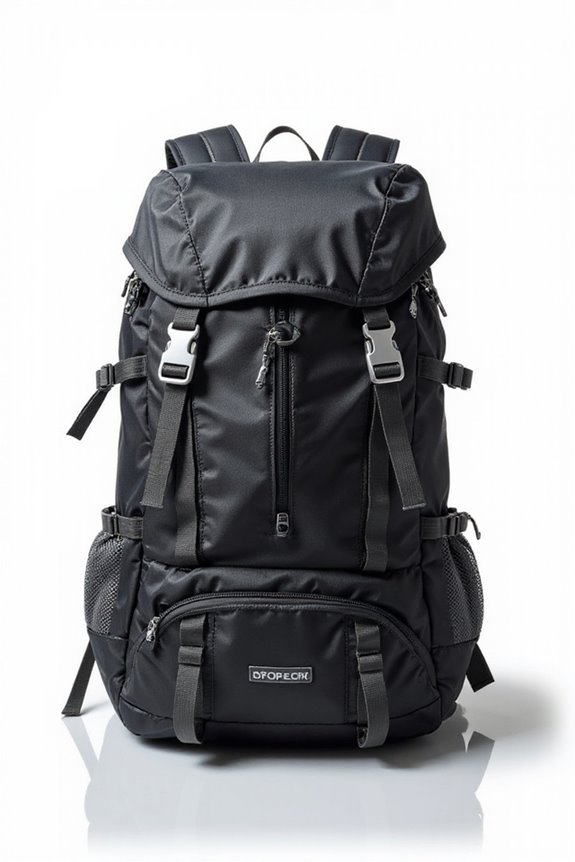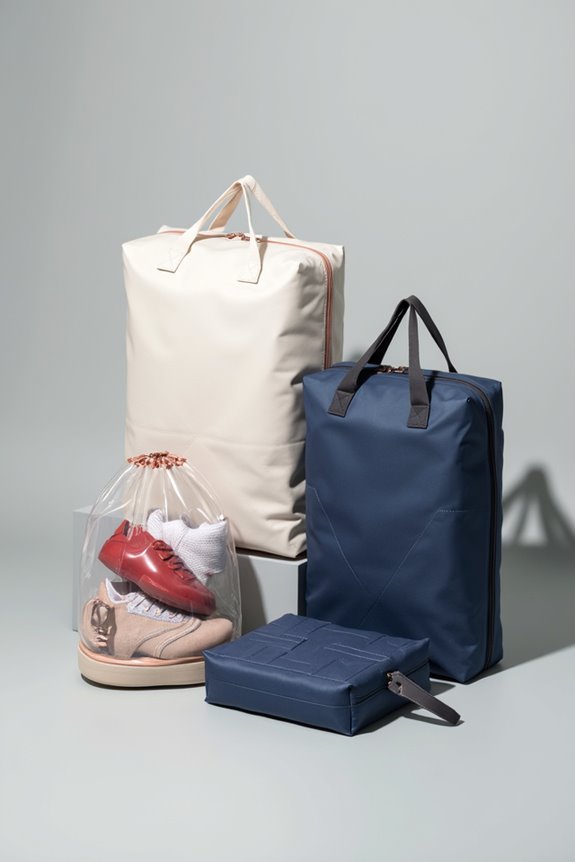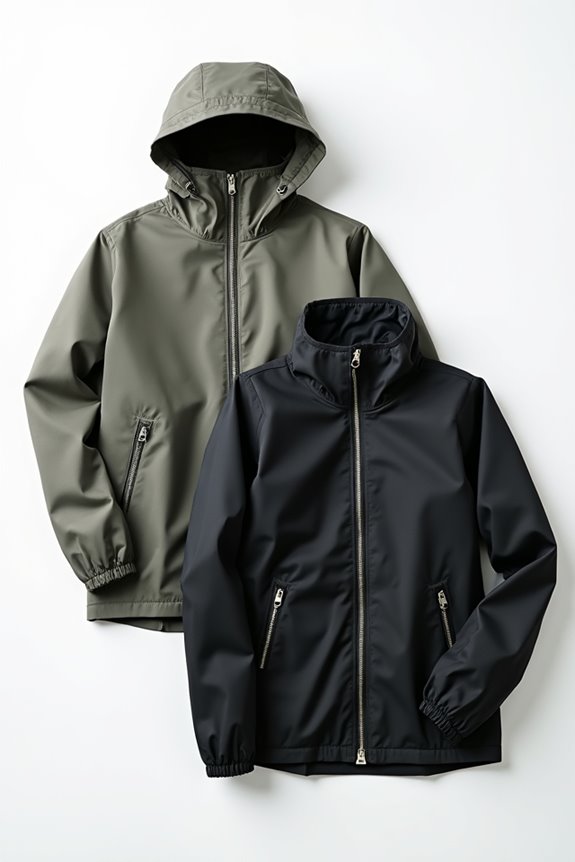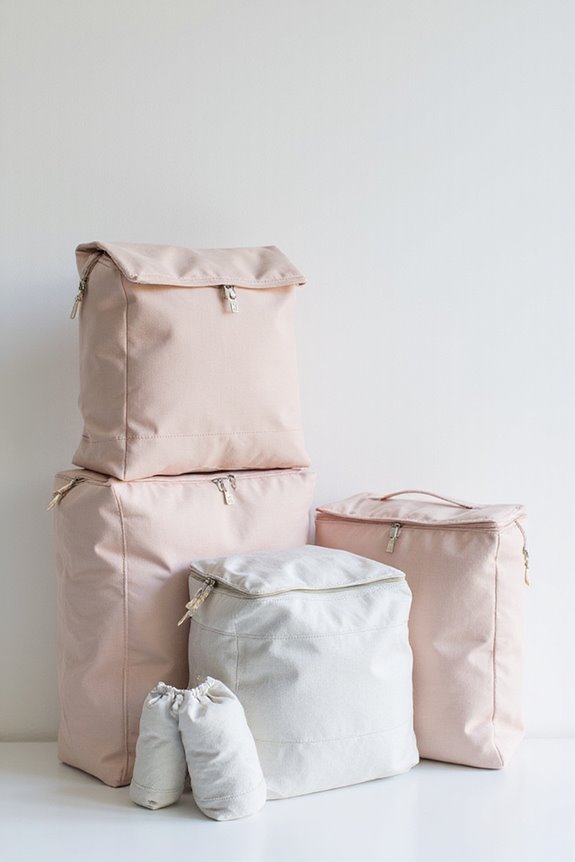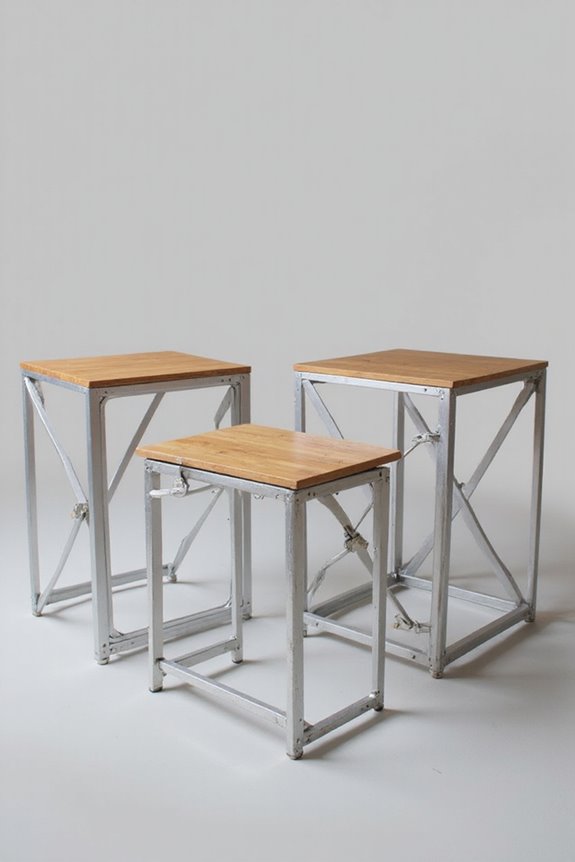When we choose a Korean travel trekking backpack, it’s essential to contemplate several factors. First, we should assess brand reputation, looking for established names like Black Yak or DAYLIFE known for quality. Size matters too; for day hikes, 20 to 30 liters is ideal, while weekend trips require 50 liters. Comfort features, such as ventilated back panels and load distribution designs, enhance our experience. Finally, ensuring the backpack is weather-resistant and durable will keep our gear safe. Further insights await us.
Key Takeaways
- Assess the size and capacity according to your trip duration; choose 9L-25L for day hikes, and 50L-70L for week-long excursions.
- Prioritize comfort features like suspended mesh back panels and adjustable back systems for better ventilation during extended outdoor activities.
- Ensure durability by selecting backpacks made from waterproof materials and reinforced construction to withstand harsh weather conditions.
- Look for ergonomic designs with S-shaped shoulder straps and padded hip belts for effective load distribution and reduced pressure points.
- Research reputable brands such as Black Yak, DAYLIFE, or emerging brands like Rawrow for quality and innovative features in backpacks.
Assessing Brand Reputation and Product Reviews
When we consider purchasing a Korean travel trekking backpack, it’s essential to assess the brand reputation alongside product reviews, as these factors greatly influence our choices. Established brands like Black Yak and DAYLIFE have cultivated brand loyalty through high-quality, durable gear, widely recognized for withstanding harsh conditions. Market trends indicate that consumers favor brands with consistent quality and thoughtful designs. For instance, Nepa continues to enhance its reputation via innovative outdoor gear that appeals to both backpackers and casual campers. Additionally, emerging brands like Rawrow are gaining traction due to their smart design choices. This focus on user feedback shapes product offerings, ensuring backpacks not only meet aesthetic standards, but also prioritize functionality for outdoor enthusiasts everywhere.
Determining the Appropriate Size and Capacity
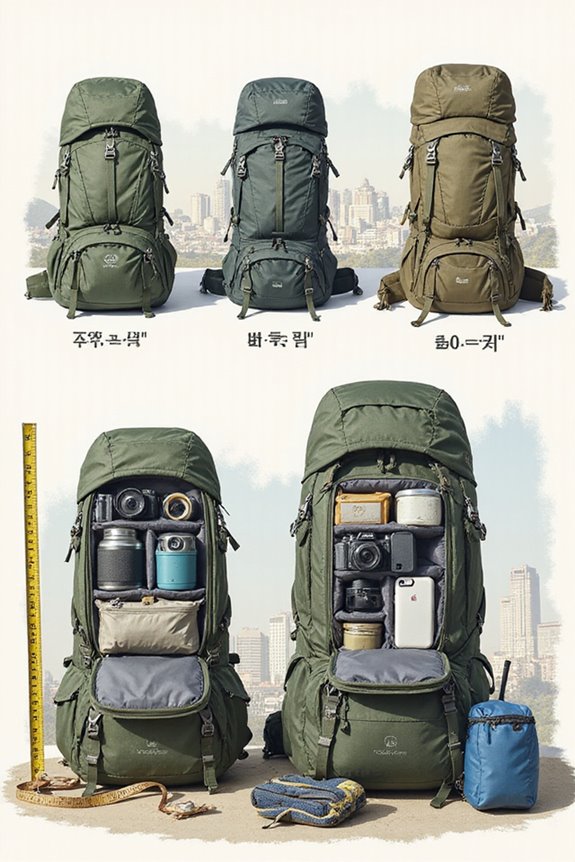
How do we determine the appropriate size and capacity for a Korean travel trekking backpack? First, we consider the trip duration. For day hikes, backpacks sized 9L to 25L suffice. Weekend trips need 30L to 50L, while week-long excursions require 50L to 70L for added gear and supplies. For extended trips, we should opt for backpacks larger than 70L. Next, we evaluate weight load: smaller packs can carry about 16 kg, while larger ones can handle up to 28 kg. We also focus on packing techniques; efficient packing can minimize space, utilizing modular packing cubes and compression bags. Overall, aligning backpack types with our activity level is crucial to guarantee we have enough capacity without excess weight.
Evaluating Comfort and Ventilation Features
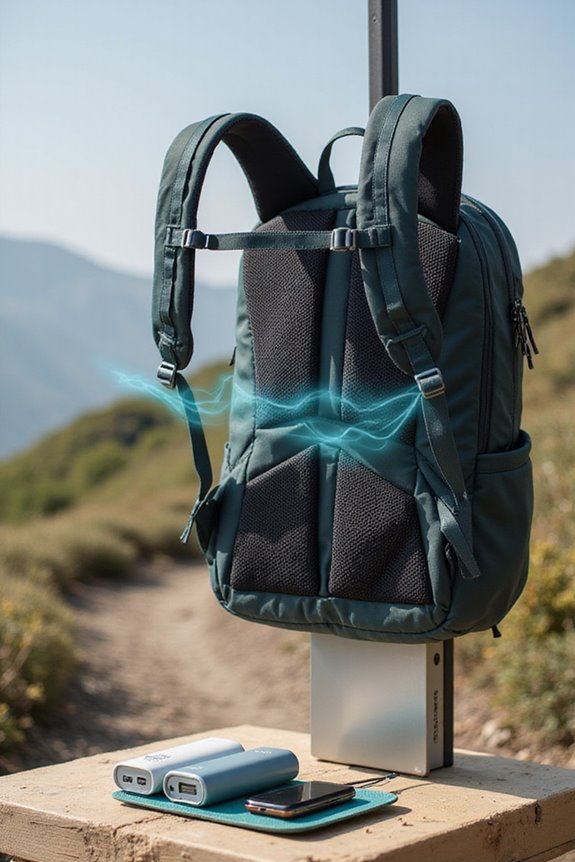
Evaluating comfort and ventilation features is vital in selecting a Korean travel trekking backpack, especially during extended outdoor activities. A backpack with suspended mesh backpanels, like the AirSpeed™ system, creates an air gap that promotes airflow optimization and minimizes heat buildup. Highly ventilated shoulder harnesses further enhance circulation, critical in warmer climates. Adjustable back systems allow for a tailored fit while maintaining ventilation efficiency. Additionally, dedicated central ventilation channels guide airflow effectively, reducing sweat accumulation during strenuous hikes. External mesh panels and stretch pockets not only aid ventilation but also maintain easy access to essentials. Overall, focusing on these elements guarantees a comfortable and cooler trekking experience, making your outdoor adventures more enjoyable.
Checking Weather Resistance and Durability
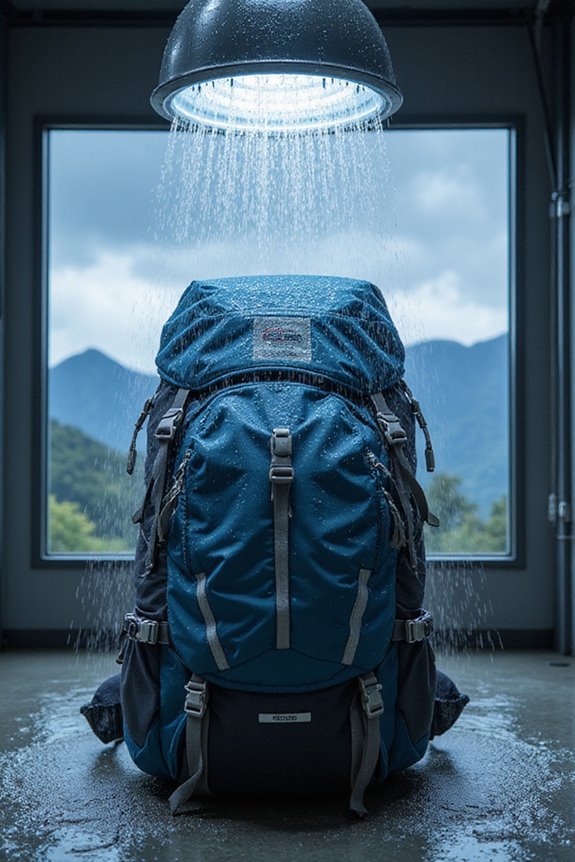
Selecting a Korean travel trekking backpack requires careful consideration of weather resistance and durability, as these features guarantee the backpack can withstand various outdoor conditions. We should look for waterproof materials, such as nylon fabrics with TPU coatings, which provide exceptional waterproof performance while using high-density nylon for abrasion resistance. Durable construction is essential, so models employing roll-top closures with magnetic buckles and Hydrolok™ zipper technology effectively keep water at bay. Additionally, high-frequency welding techniques prevent leak paths, ensuring contents remain dry. Opting for backpacks with reinforced backside panels and ThickSkin™ technology increases longevity under strain. By focusing on these specific traits, we can choose a backpack capable of enduring diverse weather environments while providing essential protection for our gear.
Analyzing Ergonomic and Load Distribution Features
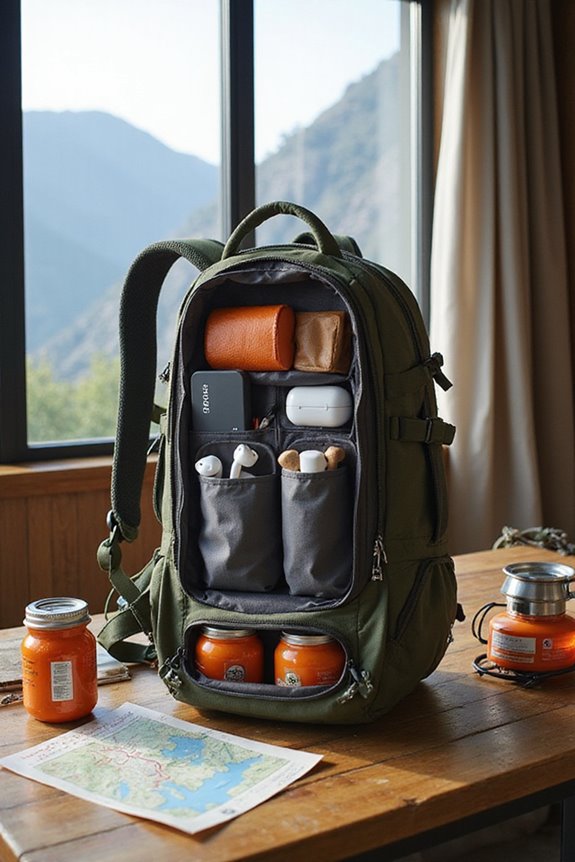
When choosing a travel trekking backpack, it’s essential to assess ergonomic and load distribution features, as these can greatly impact our comfort during long hikes. We should consider the shoulder strap design, as S-shaped straps contour around our bodies, evenly distributing weight to enhance comfort. Wide, cushioned straps help reduce pressure points, and adjustable designs allow us to customize the fit for our torso lengths. Additionally, effective load transfer systems, like padded hip belts, optimize balance by shifting weight from shoulders to hips. Internal frame structures, which maintain pack shape and improve stability, further support our journey. By focusing on these elements, we can guarantee a more supportive and comfortable hiking experience.
Considering Style and Aesthetic Preferences
How can we find a travel trekking backpack that aligns with both our functional needs and aesthetic preferences? When selecting a backpack, it’s crucial to take into account minimalist design, often seen in brands like Daylife, which offers simplicity combined with functionality. Korean outdoor brands blend robust features with urban styles, making them versatile for both trekking and everyday use. Current color trends show a dominance of neutral tones like black and gray, balanced with bright accents for a youthful touch. Additionally, compact silhouettes appeal to modern sensibilities by avoiding bulky shapes, while the use of technical fabrics guarantees durability without sacrificing aesthetic value. We should focus on these aspects to find a backpack that complements both our lifestyle and style preferences.
Frequently Asked Questions
What Materials Are Commonly Used in Korean Trekking Backpacks?
When we think about Korean trekking backpacks, we’re imagining incredible nylon durability and waterproof coatings that withstand the harshest conditions. These materials provide strength and protection, ensuring our adventures are as epic as they can be!
How Do I Clean and Maintain My Trekking Backpack?
When it comes to backpack cleaning, we recommend emptying it completely first. Following simple maintenance tips like using mild soap and air drying can help keep our packs in great condition for our adventures ahead.
Are There Specific Warranties for These Backpacks?
When we think of our adventures, warranty policies shape our peace of mind amidst the mountains. Let’s explore each brand’s reputation, ensuring we choose a backpack that’ll support us through thick and thin.
Can I Find Spare Parts for My Backpack if Needed?
Yes, we can find spare parts availability for our backpacks. For backpack repair, we should check official brand sites, online shops, and specialty retailers, ensuring we get the right components for lasting performance.
What Are Some Popular Accessories to Pair With Trekking Backpacks?
When we think about popular accessories for trekking backpacks, we can’t overlook water bottles and trekking poles. They enhance our experience, keeping us hydrated and stable on challenging trails, making our adventures more enjoyable and safe.

